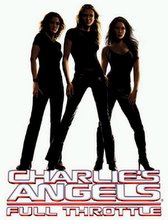Revision for representation:
Definition: Representation is the mediated versions of people, in this case woman, in the form of a re-presentation.
Stereotypes are an element that is always found in media texts, whether it adverts, films or television programmes. It is the most common form of media representation ad labels and categorises people.
Ø Media texts contain stereotypes because of the need to economy (create identification)
Ø The function of the media is to please the audience and therefore to fulfil this, representations (stereotypes) are used to meet their expectations
Ø Stereotypes are widely used because audiences can understand theses stereotype are they will be familiar with them.
Ø Familiarly will mean more audiences will understand and attract higher/mainstream audiences because most television programs are quite short, the identities of characters must be established as quickly as possible.
Ø Some stereotypes are used to create humour such as the ‘bimbo’
Feminism is the response to society’s assumptions that women should be subservient to men. Until the emergence of feminism, women were treated almost as objects, passive agents in the male world
PATRIACHAL WORLD
Laura Mulvey
She argues that cinema audiences look at films in tow ways:
Ø Voyeuristically
Ø Fetishistically
Audiences are voyeurs who watch people on screen. This can lead to two effects:
-Objectification- female characters controlling male gaze and human characteristics being taken from them.
-Narcissistic identification-having an ideal image on screen
Gauntlett argues that in contemporary society, gender roles are more complex and that the media reflect this.
He says female’s role models today are often glamorous as well as successful.
He argues that this is due to the ‘rise in girl power’
The reason women are represented inadequately is due to lack of females in higher positions. Media is a male dominated as a result woman is shown representation from their point of view.
Film in particular sees women in an active role however they are being shown as eye candy and objectified. The reason for the lack of directors is due to:
Naomie Harris
“Film is such a male dominated industry”
Ø Men are al every level making it harder for women to get their feet in the door
Ø The way of working makes it difficult for women to succeed in the business.
Ø The responsibly of caring for a child and working in the media could be a lot of work to handle.
Ø Women are better organisers (producers) and males are more creative (directors)
Ø The role of a director is equivalent to raising a family
Ø Films have expensive and advanced equipment and so males understanding how and when to use it
Ø Being charge of 10 to 150 large men with heavy equipment is best carried out by a male
Ø When women just has a child, its easy for them to go back to being a producer, however its harder if you’re a director
Gunter (1995)
In the 50’s, 60’s and 70’s, only 20% to 35% of characters were female. By mid 1980’s, women were in more leading roles but still there were twice as many men that women on television.
Miles (1975)
He found that there were nearly equal proportions of men and women in situation comedy whereas in action adventure shows, only 15% of the leading characters were female.
Gunter (1970’s)
Found that marriage, parenthood and domesticity were shown on television to be more important for women.
McNeil (1975)
Women’s movement had been largely ignored by television with married housewives being the main female role.
He also found men to be dominant characters and the decision makers on TV. Men were more assertive (aggressive) and women more passive.
Gaye Tuchman (1978)
He argued that women were underrepresented in media fictional life. A term he sued to describe this was symbolically annihilated.
Gillian Dyer (1987)
Television was increasingly taken women seriously and there are a number of programmes that feature women in a more central role.
E. Ann Kaplan
In Hollywood films, women’s desire is subjected to male desire.
Rosen (1973)
The role of women in a film almost always revolves around her physical attraction
Ø 89% of adverts used a male voiceover
Ø Men were twice more likely than women to appear in adverts for non-domestic products.
Ø Housewife images began to decline slowly after the 1950’s
Beauty
Greer (1999)
Much more pressure was put on women to impress with make up, high heels and wonder bras.
Walter (1998)
Attractive people earn more than their plain colleagues.
Representation of gender today
Past-stereotyped
Producers- women who kiss ass heroines do better business
Saturday, June 16, 2007
Subscribe to:
Post Comments (Atom)

No comments:
Post a Comment